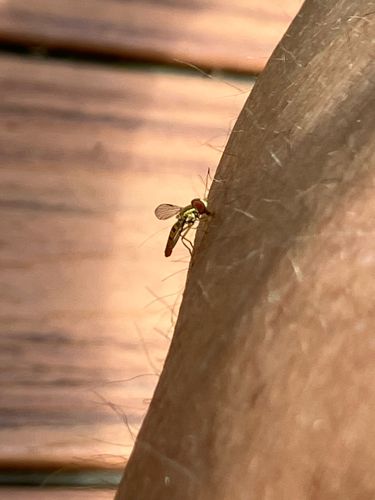Non-biting Midge
Scientific Name: Chironomidae (family)
Order & Family: Diptera, Family Chironomidae
Size: Typically 1-10 mm in length, though some can be larger.

Natural Habitat
Adults are commonly found near fresh water sources (lakes, ponds, rivers), where their larvae develop. They can also be found in damp terrestrial environments.
Diet & Feeding
Adults typically do not feed or feed on nectar/plant sap; larvae feed on detritus, algae, or small organisms in water.
Behavior Patterns
Males often form swarms, especially at dusk, which females fly into for mating. Larvae are aquatic.
Risks & Benefits
Non-biting midges do not bite humans and therefore do not transmit diseases. They can be a nuisance in large numbers. Ecologically, midge larvae are an important food source for fish and other aquatic animals, and adults serve as food for birds and bats.
Identified on: 8/14/2025